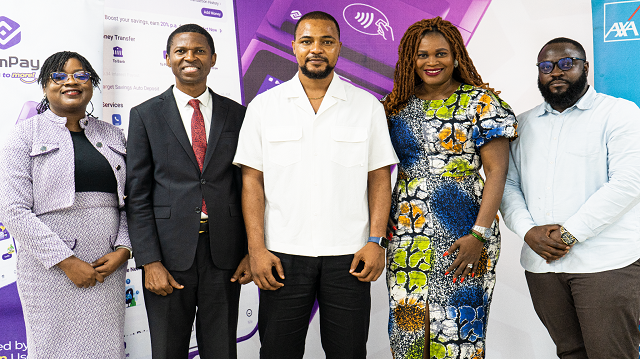E-Business
Ericsson Radio System Refines Mobile Networks Architecture

Definitely, in big cities like New York, the air space above buildings is valuable real estate– think the Manhattan skyline. Where there is no room to build out, urban planners build upward.
Ericsson is opening up the same opportunity to operators struggling with site acquisition challenges in densely populated areas, allowing them to utilize wall space in existing sites and safely add 5-times the capacity to towers.
Ericsson’s new modular Radio System, launching at the Mobile World Congress in Barcelona, will redefine how mobile networks are built on every level.
Ericsson Radio System’s modular architecture flexibly expands to changing demands on the road to 5G with multi-standard, multi-band and multi-layer technology.
It all but eliminates site acquisition issues, delivering three times the capacity density with 50 percent improvement in energy efficiency.
The system will give network operators the infrastructure they need to support growing mobile data needs, which are expected to reach 25 Exabytes per month by 2020, when 5G is expected to be commercialized.
The new portfolio reduces total cost of ownership (TCO) by 20%.
Hideyuki Tsukuda, senior vice president, Technology, Softbank Mobile, said, “As mobile broadband demand continues to grow, we are addressing the connectivity and speed requirements of our consumer and corporate customers by investing in the performance of our mobile network. Ericsson’s new modular, compact and energy-efficient radio system enables us to target our network investments precisely where and when they are needed. This helps us to quickly address increased demand and ensure continued customer satisfaction, while optimizing our available spectrum resources.”
With the new system, operators will be able to tailor and evolve each mobile network site to meet their local requirements today and in the future. Ericsson Radio System improves operator responsiveness and reduces capital and operational expenditure.
Also, Ken Rehbehn, principal analyst at 451 Research said, “The Ericsson Radio System represents a generational shift for key elements of the company’s radio access portfolio. By elevating its vision from a base station orientation towards a broader systems view, Ericsson sets the stage for evolutionary network change delivering operators needed flexibility and agility. Ericsson’s move is important to operators because it promises a strong foundation for rapid technology innovation required to cost-effectively handle growing traffic requirements, changing regulatory environments and challenging commercial realities as LTE networks become 5G networks.”
Ericsson Radio System delivers the industry’s most energy efficient and compact radio solution, maintaining performance leadership at half the size and weight.
The flexibility inherent in the architecture is made possible by targeted software deployment, which enables fast and efficient rollout of new capabilities.
On his part, Arun Bansal, senior vice president and head of Business Unit Radio, Ericsson, said, “We never compromise on radio network performance. Our experienced R&D team slashed the size and weight in half across the product line only after we secured performance. Ericsson Radio System’s multi-standard, multi-band, multi-layer architecture with integrated backhaul provides an ideal platform for operators to support their business today and on the road to 2020, laying the foundation for 5G.”
Expatiating on the new architecture, Kamar Abass, country manager, Ericsson Nigeria, defined the platform as ‘Forward-thinking and fully backward-compatible’ with Ericsson’s existing RBS 6000 portfolio, the new system protects operator investments and supports site co-existence.
Innovations across the board allow the Ericsson Radio System to eliminate site acquisition issues, reduce total cost of ownership and provide industry-leading radio density.
Abass, said it is an innovative rail system, featuring one-bolt installation, adapts to any site with zero floor footprint.
It installs in the tightest spaces, thanks to airflow innovations and configures to any site.
According to him, the radio modules can be mounted vertically or horizontally on a rail, flat on a cable ladder or behind an antenna.
Thanks to a 5-time reduction potential in wind load, the equipment is lighter and more durable for tower deployment.
Ericsson Radio System is a modular, end-to-end solution that incorporates a broad range of new products including macro and small cells, antennasystems, IP transport, microwave nodes, rails and other site equipment.
The system is augmented through twice-yearly network software updates, and through Ericsson Global Services offerings.
A new addition to the Ericsson Radio System portfolio is the smallest, most powerful outdoor microcell on the market, the Radio 2203.
Its sleek, minimalistic Scandinavian design complements any environment.
Another addition to the system is the most powerful baseband ever, the Baseband 5216. On one board, it is able to handle twice as many cells as existing baseband units; supports both LTE FDD and TDD modes simultaneously; and supports up to80,000 subscribers.
All backhaul solutions are fully integrated into the Ericsson Radio System.
The offering has been expanded with IP routers and an array of new additions to our MINI-LINK microwave portfolio, featuring a70 percent smaller indoor unit with the highest microwave node capacity in the market, a 1Gbps small cell link with a 40 percent smaller footprint and an 8Gbps E-band solution.
The new Router 6000 series is SDN capable and fully supports increasing capacity needs with products ranging from 100 Gbps to 2.1 Tbpss witching capacity.
The first deployments of the Ericsson Radio System will be during the third quarter 2015 and will run Ericsson Networks Software 15B.
Twice-annual software updates simplify the upgrade process and the entire system is run by a common management system, Ericsson Network Manager.
During Mobile World Congress 2015 in Barcelona, Spain, Ericsson is showing world-leading technology, service capabilities, and innovations.
The Networked Society is transforming entire industries.
ICT tools have become fundamental everyday resources for businesses, people and society.
“We lead the way with hardware, services and software solutions that drive development in mobility, broadband and cloud, creating the foundation for new eco-systems, and transformation across industries.
“The change that transformation brings is in the hands of everyone. That is why we at Mobile World Congress this year will talk about how we enable change-makers in the Networked Society to advance digital experiences,” the Company said.
E-Business
Firm Shares Tips for Safer Remote Working

It is holiday season in many parts of the world. These days though, going on holiday does not always mean turning your back on office life – hybrid work cuts both ways.

Today’s widespread connectivity—available at airports, train stations, restaurants, hotels, and most indoor public spaces—makes staying connected easier than ever, with free Wi-Fi in many locations and reliable 4G or 5G coverage elsewhere, helping to facilitate a seamless blend of work and leisure even while on holiday.
This increase in connectivity among travellers has not gone unnoticed by cyber criminals. Kaspersky experts analysed nearly 25,000 free Wi-Fi spots in Paris ahead of the Summer Olympic Games and Paralympic Games. The analysis revealed that almost 25% of these networks had weak or no encryption, making users vulnerable to personal and banking data theft.
Travellers often have their guard down. The unfamiliar surroundings of a new location or a different language can throw up a useful smokescreen for a cyberattack, meaning additional care needs to be taken when logging on. Fortunately, a few smart tools and habits can help you stay protected while enjoying the flexibility of remote work.
Use a VPN for secure connections
A VPN is one of the most effective ways to safeguard users’ online activity, especially when working from unfamiliar locations. By encrypting Internet traffic, a VPN ensures that hackers can’t intercept sensitive data like login credentials or financial details. This is particularly important when accessing work emails or company files on public Wi-Fi, where cybercriminals often lurk.
Switch to an eSIM for reliable, secure mobile data
Another useful digital tool that provides a seamless way to stay connected using local mobile networks with no physical SIM card required is the eSIM. This is a game-changer for international travellers who want to avoid sky-high roaming charges or the hassle of hunting down temporary SIM cards in foreign countries.
With an eSIM, a user can download a local data plan before you even arrive at your destination, ensuring instant connectivity the moment you land. This eliminates the need to rely on unsecured Wi-Fi hotspots, significantly reducing your exposure to cyber threats.
Plus, many eSIM providers allow you to manage multiple profiles on a single device, making it easy to switch between work and personal data plans without juggling multiple phones.
Services like Kaspersky eSIM Store enables users to purchase and activate data plans in advance, track usage and top up as needed, all from a single app.
Enable two-factor authentication (2FA)
When travelling, people often leave devices unattended. To protect against unwanted people logging in, travellers should ensure two-factor authentication (2FA) is enabled on all critical accounts and that passwords are used on all devices.
Final tips for a secure workation
Even with a VPN, eSIM and 2FA in place, your devices still need strong defenses against malware, phishing scams and ransomware. Cybercriminals often target remote workers who may let their guard down while travelling, making real-time protection essential.
Modern antivirus software does more than just scan for viruses, it actively blocks malicious downloads, warns you about phishing attempts and even secures your passwords and financial data.
For the most robust security, consider a solution like Kaspersky Premium, which combines antivirus protection, a VPN and password management into a single, easy-to-use package.
By combining a VPN, eSIM and strong antivirus, you can work from anywhere with confidence, whether you’re sending emails from a poolside or joining a video call from a festival tent.
E-Business
Zequence Digital Boss Calls for Strong IP Laws Enforcement, to Protect Nigeria’s Software Sector

Mr Adeoye Oludamilola, managing director, Zequence Digital, a digital agency, has said strong enforcement of Intellectual Property (IP) laws , protection of Nigeria’s software industry against piracy will encourage innovation and investment.

Adeoye told reporters lately in Lagos that software piracy and the unauthorised use of proprietary technology are widespread in the country.
According to report Intellectual Property (IP) laws in software refers to the legal rights that protect the creations of the mind used in software development.
These rights, which include copyrights, patents, trade secrets, and trademarks, grant developers exclusive control over their software and related assets, preventing unauthorised use or reproduction.
Adeoye said that many startups do not protect their innovations, due to a lack of knowledge and the cumbersome legal processes involved.
“IP registration and litigation are expensive and time-consuming, which further discourages developers from protecting their work,” Adeoye said.
He added that the lack of awareness among developers about their IP rights contributed to the problem.
To address these challenges, Adeoye stressed the need for the formation of an IP Protection Consortium, comprising tech firms, legal experts, and regulators, to advocate for stronger IP enforcement.
He also suggested collaborating with legal tech startups to create simplified platforms for fast-tracked IP registration.
The managing director further called for joint initiatives between legal bodies and tech communities to launch IP rights education campaigns.
This, he said, would equip developers with the knowledge they needed to protect their innovations and grow their businesses.
Adeoye emphasised the need for the government and stakeholders to create an ecosystem for development and inclusivity by proactively engaging with regulators.
According to him, this will help ensure that policies are created with the input of concerned agencies and industry experts.
E-Business
PalmPay Partners AXA Mansard Health to Make Digital Insurance Accessible, Affordable

PalmPay, a leading fintech platform and full-stack digital neobank for emerging markets, has partnered with Nigeria’s biggest Health Insurance Company, AXA Mansard Health a member of the globally trusted AXA Group, to provide millions of Nigerians with affordable, accessible digital health insurance.

This strategic partnership enables PalmPay users to seamlessly access a range of health insurance packages from AXA Mansard directly within the PalmPay app. With plans starting as low as N500 per month, users can now choose from flexible insurance options tailored to fit their everyday needs.
The plans are designed to meet a wide range of needs; for example, the AXA Digital Health plan offers access to telemedicine consultations with doctors, N5,000 worth of medications, and up to N40,000 in surgical coverage. Users can also opt for the AXA Mansard MicroHealth plan at N1,000 per month, which provides unlimited diagnostic tests and funeral benefits. Additionally, the AXA Mansard Accident plan, available for N500 monthly, offers comprehensive death cover for both accidental and non-accidental cases.
Speaking on the partnership, Habib Kowontan, Head of Wealth Product at PalmPay, said: “Insurance is a key pillar of financial security, yet millions of Nigerians remain underserved. Our partnership with AXA Mansard Health breaks down long-standing barriers by placing reliable and affordable insurance solutions right at our users’ fingertips.”
In her remarks, Jumoke Odunlami, Chief Distribution Officer, AXA Mansard Insurance said that the partnership with Palmpay presents the AXA with another opportunity to improve health and productivity of Nigerians. “Through partnerships like this, we are covering over 1.8 million Nigerians and ensuring that healthcare is accessible, available and affordable.
“So we are excited about joining forces with a brand like Palmpay to compliment the range of financial possibilities they offer their customers with health plans. It fits well with our mission and our purpose of acting for human progress by protecting what matters, and we are looking forward to doing even more with Palmpay”, she explained.
This partnership reflects PalmPay’s broader mission to create a more inclusive digital financial ecosystem, one that empowers users to not only manage their money efficiently, but also secure their future.
This partnership reflects PalmPay’s broader mission to create a more inclusive digital financial ecosystem, one that empowers users to not only manage their money efficiently, but also secure their future.

 News3 days ago
News3 days agoGoogle Hit by AI-driven Cyber Attack

 General News3 days ago
General News3 days agoKuwait Busts Nigerian Cybercrime Ring Targeting Telecom Tower, Banks

 News3 days ago
News3 days agoFIRS Rolls out e-invoicing System for Large Corporate Taxpayers

 E-Business3 days ago
E-Business3 days agoPalmPay Partners AXA Mansard Health to Make Digital Insurance Accessible, Affordable

 E-Business3 days ago
E-Business3 days agoZequence Digital Boss Calls for Strong IP Laws Enforcement, to Protect Nigeria’s Software Sector

 Telecom3 days ago
Telecom3 days agoMTN Nigeria’s Mega Billion Promo Turns Airtime into Fortune for Thousands Amid Economic Strain

 E-Financial2 days ago
E-Financial2 days agoNBS Reports ₦6.72 Trillion VAT Haul as Tax Reforms Pay Off

 Telecom3 days ago
Telecom3 days agoI see Crisis, Resignations @ MTN, Airtel, Others – Primate Ayodele















